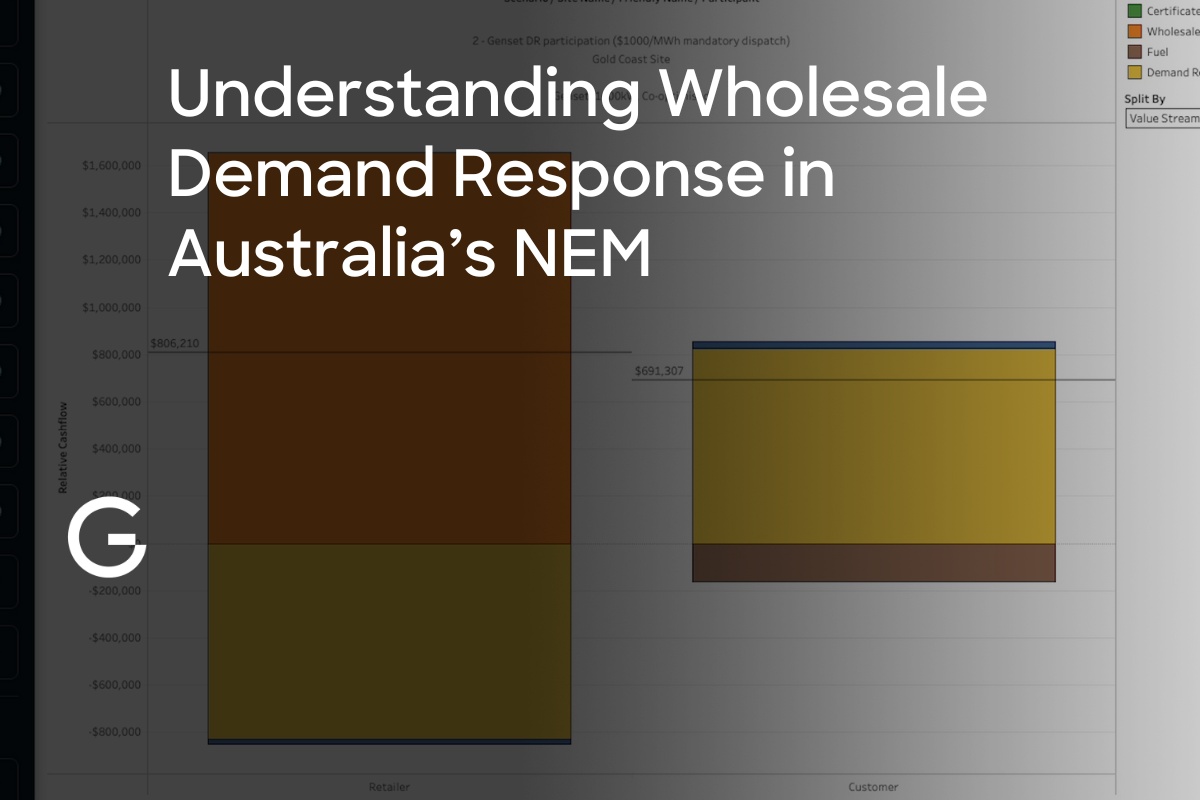What the ESB has planned for Distributed Energy Resources

This week Australia’s Energy Security Board released its Post-2025 Market Design Options Paper.
The paper proposes pathways and reform options to meet four key areas of need for Australia’s future energy system:
- Resource adequacy through the transition
- Essential system services and scheduling and ahead mechanisms
- Integration of distributed energy resources and flexible demand
- Transmission and access
At Gridcognition we are interested in all of these areas, but none more so than the better integration of distributed energy resources (DER) and flexible demand into the energy system. Our view is DER is not a demand-side problem to be managed, but the supply-side solution.
Australia is leading the world in the deployment of DER, particularly at the household level, as the paper notes.
“[T]he pace of change continuing across the sector and, in particular, the continued rapid uptake of small scale DER at household level, highlights the need for clear processes and timing for decision making, and greater coordination across the sector.”
The ESB is one of a number of parties driving reform of Australia’s energy market, along with the AEMC and ARENA with their Distributed Energy Integration Program. The options describes a plan for a plan with the notion of an “egg-timer” shaped Maturity Plan Framework for the many stakeholders involved to come together to rapidly iterate on the key issues and use-cases.
“The framework would involve engagement four times a year, over a 2-week window of iterative co- design workshops. At the end of each release cycle, directions are made by the ESB on core decisions relating to each issue. At that stage, the ‘egg timer’ flips over and the cycle starts again focussed on the priority issues for the next release of the plan.”
The first release of the Maturity Plan (R1) is planned for June 2021, and will focus on Minimum System Demand and DER Participation.
The full set of Issues, Use-cases, and Priorities for the Maturity Plan are documented in a table in the Options paper, but the table is very light on the detail of the use-cases. Here are all those use-cases with my speculation (in italics) on what they all mean.
What has the ESB missed? What have I missed?
Minimum Demand:
- Emergency backstop – capability to remotely switch off behind-the-meter solar to address minimum system demand?
- Active solar in energy market – possibly aggregation of behind-the-meter solar into so called ‘virtual power plants’ to bid exported energy into wholesale markets?
- Active solar with system constraint – as above, but applying transmission and/or distribution constraints into the ‘dispatch’ from these virtual power plants?
- C&I Turn-up load / WDR – load-up services from commercial & industrial sites in response to minimum system demand issues and/or negative wholesale energy prices, in coordination with the new wholesale demand response mechanism?
- EV turn-up load /shifting – load-up services, as above, from EV charging and/or mechanisms and incentives to shift EV charging times?
Residential appliance participation:
- SGA market participation – Enabling demand-response enabled residential appliances like pool pumps, EV charges and air-conditioners to participate in energy markets via the existing Small Generator Aggregation mechanism?
- Active DER LV constraints with communication standards (2030.5) – Publishing LV distribution network constraints to DER via ISO2030.5 to constrain imports and exports?
- SGA market participation with cybersecurity considerations – As above, but now with extra “cybersecurity”
DER participation in network services:
- DER responses to advanced tariff structures – Publishing more complex and dynamic network tariff structures to DER to enable more intelligent control (e.g. critical peak tariffs, time-of-use demand charges, etc)?
- Direct procurement for network capacity – Mechanisms for distribution network services providers to procure services from DER to provide network capacity (manage thermal constraints?) as an alternative to traditional augmentation?
- Direct procurement for voltage services – As above, but for voltage regulation?
- Direct procurement for reliability – As above, but for network reliability?
Distribution security for solar PV:
- Residential dynamic limits for solar PV – Publishing ‘dynamic operating envelopes’ to constrain import and export at household connections to the distribution network?
- C&I trading with dynamic limits for solar PV – As above, but for commercial and industrial electricity users, and with some sense of enabling more direct wholesale energy market exposure for these customers and/or their market participants / aggregators?
Distribution security for DER (storage, EVs, devices):
- Residential DER trading with dynamic limits – As above, but for residential customers?
- DER import limits (EVs) – Applying dynamic? import limits to EV charging systems (e.g. charge as quickly as you want in the middle of the day, but charge more slowly during the evening ramp up)?
DER participation in new ESS / RAMS markets:
- DER in Fast Frequency Markets – Enabling DER to participate in the proposed 2-second fast frequency response market?
- DER in Operational Reserves – Enabling DER to participate in the proposed operating reserves market?
DER participation existing ESS / RAMS:
- DER in RERT – Enabling DER to participate in the existing Reliability and Emergence Reserve Trader market?
- DER in RRO – Enabling DER, like behind-the-meter batteries, to participate in the Retailer Reliability Obligation market?
DER participation in local energy services:
- Community Storage services – developing new rules and mechanisms to enable shared ‘community’ batteries to participate in energy markets and provide network services?
- Local energy matching / trading – developing new rules and mechanisms to enable local energy trading/sharing at the feeder level, presumably with some mechanism to reduce network costs for locally matched energy?







